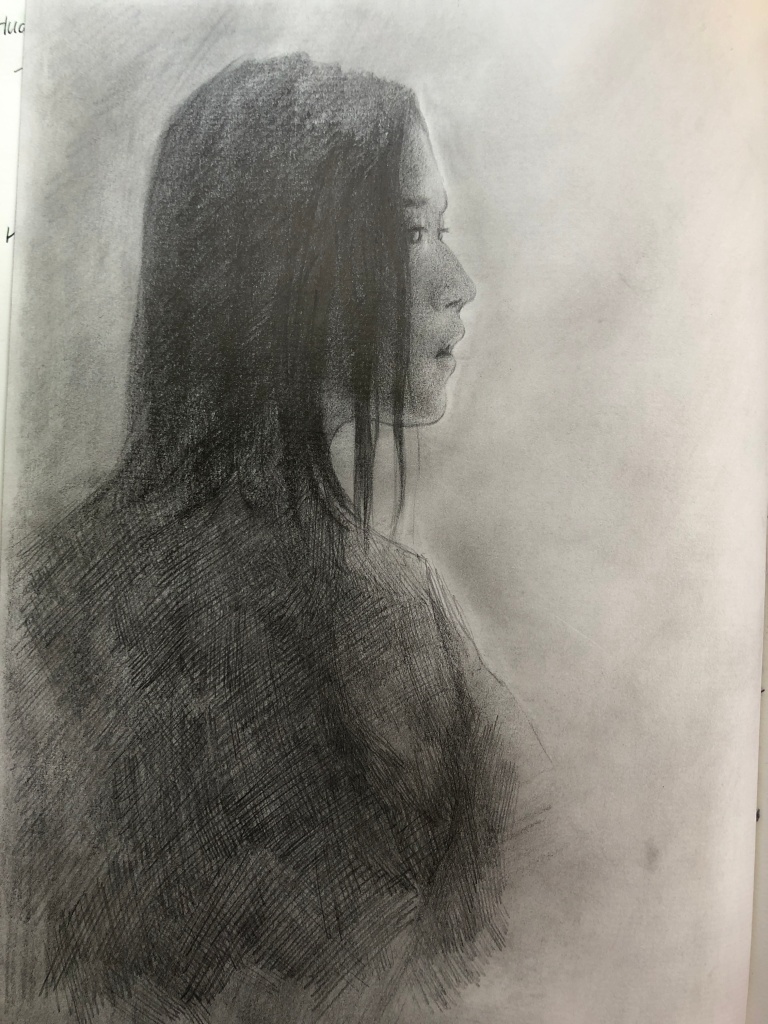This week started with two attempts of experimental edit of the previous proposal writing. The current outcome introduced a possible perspective which is to narrow the investigation in the field of painting solo.
The Anxiety of Painting
The liberation of productivity pushed the advancement of era, granted more possibilities to our society. Especially the application of machinery and assembly line, massively impacted on the traditional structure of the society. The value of the western society which established on profound Conservatism brought many interesting factors.
The transition of eras generated a considerable amount of inspirations. However, the valid topic of painting is always limited. A limited number of masters also dominates the style in a field. In order to survive and thrive in a competitive market, there is no doubt that artists were required to enable their work to obtain the potential to be a carrier of social wealth. In 16th, 17th century, this trend revealed as a pursuit in a realistic style and touring around Europe. Painters attracted commissioners and collectors via demonstrating distinct European civilisations; in the 18th and 19th century, innovations in navigation greatly expanded the market for exotic styles. Painters had to travel to the western frontier and the Far East to explore landscapes that have never been recorded before.
The end of the geographical discovery also enclosed the available topics that could be gained from observing nature. Painters had to explore new concepts for methodologies. Gradually, the painting was converted to carries ideas and theories as to its essential motivation while documentation was taken over by other formats.
The reassert of vintage aesthetic tends to appear when the society is experiencing its rapid change. Movements like Art Nouveau was led by artists who demonstrate great anxiety over the industrialisation, demonstrating attempts of “exceeding the physical capability of a machine”, and the struggling for the occupation of a dominating position in the symbiotic relationship with machinery, also a reassertion of returning to nature. Later in the century, the core guidance switched to “creating works that machine cannot”. It explained why the art style has been growing to abstract.
The rapid exchange of information, utilisation of more advanced tools and a further boost to productivity asserted painting tremendous difficulty for being explained. Western painters have acknowledged and been practising under the idea “painting is the carrier of concept and idea”. The value established on Conservatism generated an environment in which “minorities can not be valued reasonably”. In this context, can the experience of the past be referable? Can we picture the future to some extends? Where the future of painting lies?
And the second one:
In the late nineteenth century, the application of machinery, as well as the appearance of factories, significantly liberated the productivity in Europe. The advancement of the era substantially impacted on the traditional structure of the society. Dilemmas regarding the relationship between human, nature and the industrialisation of the world were introduced.
The transition of the society has widened the sight of European field of painting. Despite the number of interesting factors that worth discussion, topics of painting is generally limited. In the art market which has been maturing, movements and styles were dominated by specific masters. In order to gain popularity, paintings were required to be persuasive, and obtained the capability to be a carrier of means of production; the promotion could be achieved by expanding the field or discover new territories at the same time. One of the most representative example was the development of Hudson River School, which was stimulated by the Westward Expansion, and displayed the adventurous spirit that inherited from the continental colonists. Meanwhile, paintings mimicked the aesthetic of Far Eastern culture also revealed a considerable attractiveness of the exotic style in the expanding market.
At the end of the Age of Discovery, photography replaced painting as an efficient and economical alternative. The pursuit of being realistic, in the large picture, was not necessary any longer. Painting styles gradually evolved from precise, documentary to freehand and impressionist. Similar to the replacement of human resource by machinery, techniques demonstrated vintages was created in response to the social transition. Especially the Art Nouveau at the beginning of the twentieth century can be regarded as the anxiety when graphic-based artists are facing the concern of “being eliminated by the industrialisation”. They studied their culture, extracted elegant textures from the history and experimented with creating an accurate complex which “reached the equal level of machinery”. The determination led to the evolvement of art in the last century, which ultimately result in the trend of abstract art.
Then, the rapid exchange of information, utilisation of more advanced tools and a further boost to productivity asserted painting tremendous difficulty for being explained. Western painters have acknowledged and been practising under the idea “painting is the carrier of concept and idea”. The value established on Conservatism generated an environment in which “minorities can not be valued reasonably”. In this context, can the experience of the past be referable? Can we picture the future to some extends? Where the future of painting lies?
Obviously, I have reached the dilemma of producing this proposal. The subject is considerably broad at this moment, and there is no clear objective for the research. I booked tutorials with Victoria Aherns and Nicolas Rae the next week. Hopefully constructive advice could be obtained.
Some sketches were produced in week 19. A primarily looked into some designs of figures that are potentially suitable for my landscapes. I believe figures could be equally important in my research direction, especially when they were installed in landscapes. Figures could be used to assign specific identities to a picture of the landscape. However, I am not considering enriching information such as location, season and interacting characters. I would like to utilise their posts and forms to define the atmosphere of the landscape.







